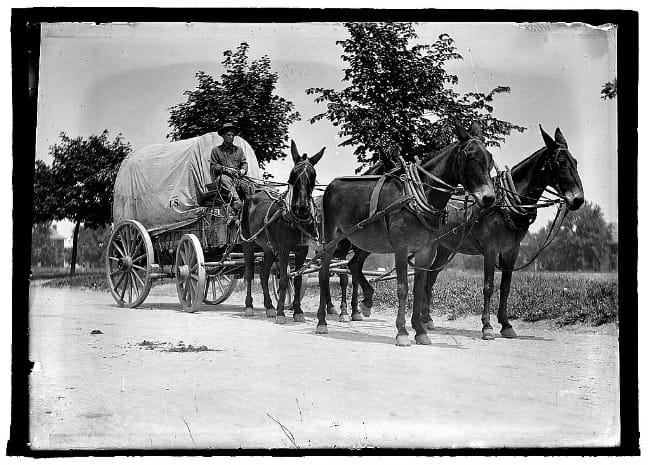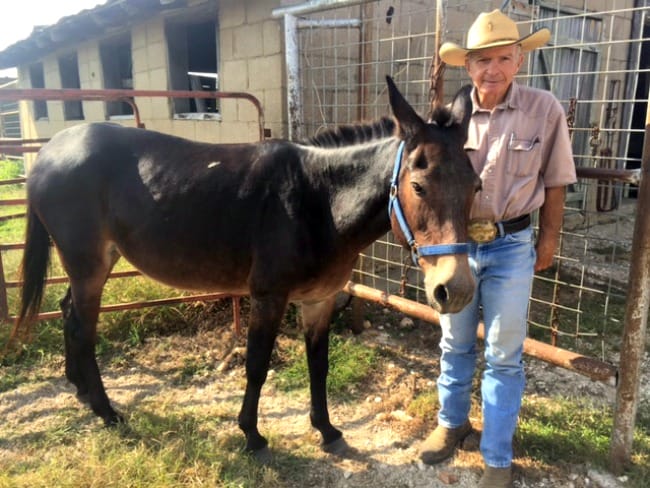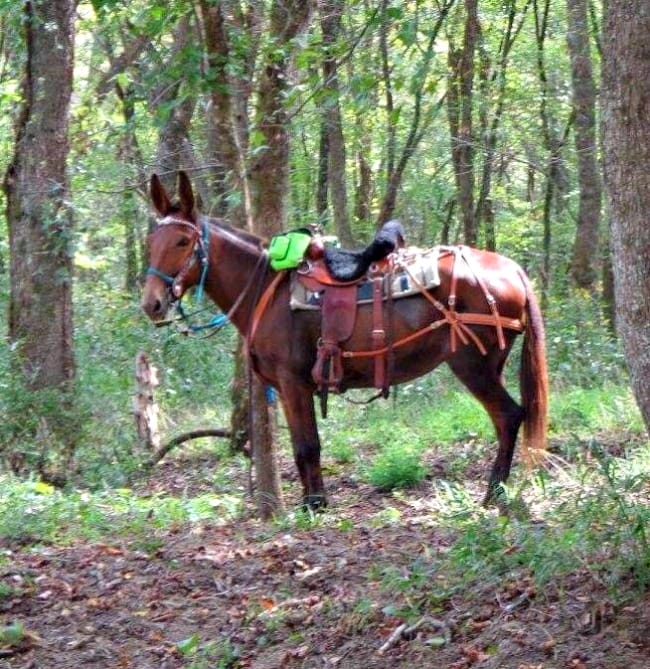

Uh oh...
It appears that you're using a severely outdated version of Safari on Windows. Many features won't work correctly, and functionality can't be guaranteed. Please try viewing this website in Edge, Mozilla, Chrome, or another modern browser. Sorry for any inconvenience this may have caused!
Read More about this safari issue.

We’ve all heard the phrase “as stubborn as a mule” but in reality, mules are intelligent, hard-working animals that have a long history in the Arkansas. Mules are the result of crossing a male donkey with a female horse. The lineage of the American mule can be traced all the way back to George Washington.
The newly minted country had few mules and Washington felt mules would be crucial to the agricultural development of the nation. He asked Spanish King Charles III if he could have a royal jack (male donkey) to begin a breeding program. At the time, it was illegal to export a Spanish jack. The Spanish mule breeding program was highly regarded and Spanish mules were prized. The donkey arrived in 1785 and the history of mules in America began.

Washington’s bet paid off, especially in the South. By 1808, the U.S. had around 855,000 mules. Their endurance made them the preferred farm animal in the South. They consumed less than a horse, were hardier animals and worked longer. Soon mules pulled wagon trains across the southwest and became the backbone of the army as well.
In 1850, Arkansas had an estimated 12,000 mules. By the next decade, that number jumped to over 57,000 and continued to rise as mules plowed fields, pulled wagons through the steep Ozark and Ouachita mountains and even pulled streetcars through Little Rock and Ft. Smith. The number of mules peaked in the 1930s. During the Depression era, over 350,000 Arkansas mules worked the fields to help plant and harvest crops for a hungry population.

Photo Credit: Library of Congress, Prints & Photographs Division, [reproduction number, e.g., [LC-F82-1234]
Like the horse, the mule suffered a sharp decline after World War II as modern farm equipment came into widespread use. However, you can still find mules in Arkansas.
Loyd Hawley has been raising mules in Prairie Grove for over 30 years. Like many mule enthusiasts, he originally rode horses and stumbled into the world of mules. He bought a pair of mules and took them to a mule show. The Hawley family was already competing in horse shows. Loyd says they decided to enter every event in the mule show. “We didn’t do worth a darn, but we sure had fun.” That first mule show was just the beginning of the adventure for the Hawleys.

Loyd had always been interested in genetics and saw an opportunity in mule breeding. At the time, people would breed mares they considered lower quality to a jack to produce a mule. Loyd decided to look for the best breeding stock he could and try to produce a higher quality mule. He purchased a daughter of quarter horse racing champion Easy Jet and bred her to Arkansas Red, a high-quality jack donkey.
He built his herd of broodmares up to 35, each mare known for different abilities. Loyd’s dedication to superior breeding has produced many fine mules over his long career. Most of his animals are used for trail riding and he prides himself on matching the potential owner to the right mule. “I’ve made people mad because I wouldn’t sell a mule that I knew wouldn’t work out for them.”

Mules are prized for their surefootedness and sense of preservation. Horses spook quite easily and will take a rider with them, but mules have a steadier personality. They provide a safer trail experience, especially for less experienced riders. Loyd says he’s seen an increase in Baby Boomers buying mules as Boomers retire and decide they’d like to ride but prefer a gentle animal with an easy gait.
Robin Post, of Post Farms Mules in Dolph, Arkansas, agrees that mules are an amazing ride. She and her husband have bred and raised mules for 20 years. Like Loyd, they started small and bred a jack to a Missouri Fox Trotter mare. They loved the mule and bred the mare again a year later to have a matching set. Though the mules were originally for pulling a wagon, they did so well, they broke the mules to ride. Robin says, “When we started riding them, we were absolutely hooked.” Now the Posts have 25 brood mares. They’ve sold mules all over the U.S. as well as France, Canada and Mexico.

As for why the Posts made the transition to breeding mules, Robin finds that question easy to answer. “I think mules are so sure-footed and they will bond to their owners easily. They are very intelligent and willing to please, with each having its own personality They have a nice long stride and it makes a very soft ride. I believe anything a horse can do a mule can do, too.”
If you’re intrigued by the idea of mules, but not ready to purchase your own, you can head to the Pea Ridge Mule Jump held in Pea Ridge Oct. 14. Mule jumping originated from coon hunting. When hunters encountered a fence, they would dismount their mules, throw a blanket over the fence and encourage the mules to jump. Mules aren’t natural jumpers, but they can jump, and they do so from a standing start.
The Pea Ridge mule jump has three jumping events as well as some rodeo-style events. They also boast live music and over 100 vendors. Find out more about the mule jump festival at pearidgemulejump.com. Whether you visit the mule jump or decide to check out mules for their trail riding abilities, you’ll find an animal with a presidential past that’s played an important, if underrated, role in Arkansas history.

Photos of Post Farms Mules courtesy of Post Farms and used with permission.
We do the work.
You check your email.
Sign up for our weekly e-news.
Get stories sent straight to your inbox!









Like this story? Read more from Kimberly Mitchell
The American Black Walnut is a unique nut for many reasons, and Arkansas...
The Razorbacks are famous across Arkansas and beyond. Many sports fans...
Women’s volleyball has become a central sport in Arkansas, deeply...
Join the Conversation
Leave a Comment